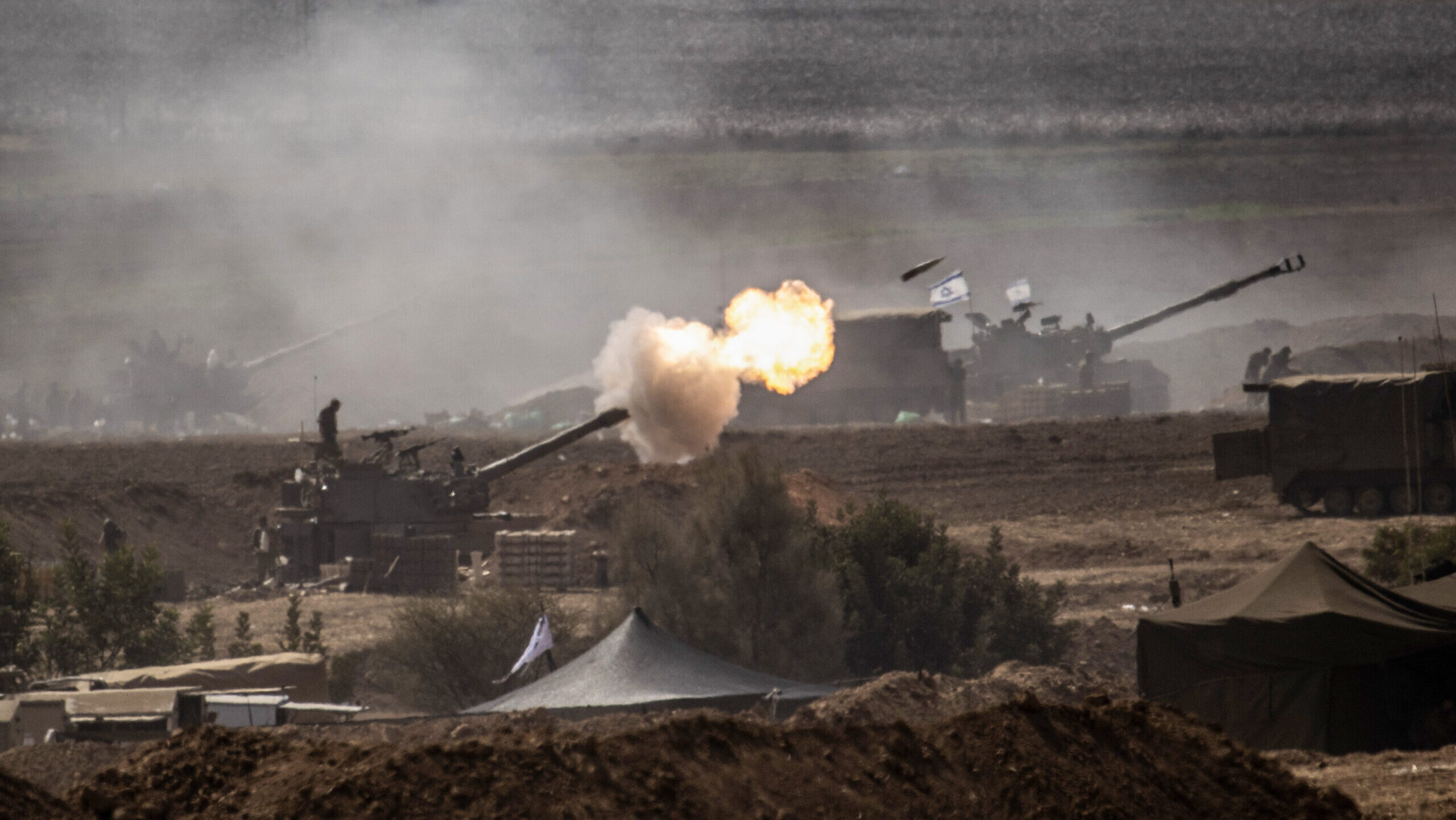
SDEROT, Israel — Five days after a massive attack by Hamas led to the killing of 169 soldiers and the murder more than 1,000 civilians, Israel’s security forces have retaken the border region and declared more than 20 communities a closed military zone close to Gaza. But the scars from the attacks are far from healed.
The country is in a standstill. Masses of flights are cancelled. In many towns the streets are deserted and Jerusalem every night has the still air as if everything has stopped.
Southern Israel near the Gaza Strip now has the feeling of a ghost town, with most shops closed and few people on the roads. The exception are police and Israeli Defense Forces (IDF) vehicles, and volunteers who are bringing food to the troops and the remaining communities. This is an area that was once made up of pastoral farming communities, called Kibbutzim, many of which were founded in the 1940s and 1950s. Now they are deserted. The residents who weren’t killed or wounded in the first 24 hours of the war evacuated by the government.
Since Saturday’s assault, Israel has called up 300,000 reservists, many of whom have already arrived at the border. Bases located along some of the roads leading to Sderot, a city near the Gaza border, are overflowing with soldiers arriving in their cars and signing up for duty. In some cases, the cars overflow onto the roads, like a giant parking lot.
Israel’s President Isaac Herzog visited Sderot on Wednesday, where he met with first responders and police from the city who were involved in some of the first battles with Hamas attackers. In many cases local police were outnumbered, with two dozen killed in firefights here. Herzog said that the “spirit of Israel is strong,” a sense reiterated by police commanders just a few days removed from the fighting.
The Day Of The Attack
In interviews with half a dozen soldiers from different infantry units, the story of Oct. 7 largely follows the same pattern. They were awakened by sirens or alerts on their phones. They rushed to their units, because many were at home for a local holiday. They had to travel to the areas around the Gaza Strip and went into action piecemeal, without a fully coordinated effort.
That chaos was a feature, not a bug, of Hamas’s attack. The terrorists targeted military facilities early on, blinding Israel’s high-tech sensors through drone attacks, killing key Israeli commanders and overrunning local headquarters. When special forces quick reaction units arrived, they were often outnumbered by the attackers. It took time to control various sectors, with fighting still raging 40 hours after the initial assault. Meanwhile the mass killing of civilians continued.





Israel had trained for these scenarios, yet there is a sense that much went wrong with the response. The consensus among those interviewed by Breaking Defense is that the time for investigations will come later, but the war must be won now.
Israel is largely following the same playbook as past conflicts with Hamas — try to isolate Gaza and conduct widespread strikes. But the tenor of this conflict is different, with Israeli officials pledging to wipe Hamas out for good and a strict blockade that Defense Minister Yoav Gallant has described as “no electricity, no food, no water, no fuel.” The blockade has drawn condemnation from international aid groups, as has a relentless bombing campaign by Israel targeting Gaza that has reportedly killed over 1,000 Palestinians. But it’s clear much of the Israeli population and its political leadership have little sympathy after this weekend’s events.
Never in the Israel’s history have 1,000 civilians been killed on one day, with horrific reporting of massacres of civilians. Some have compared it to 9/11 for Americans, but the per-capita death rate means so many more people in Israel know someone who was killed. The situation is even worse for those families of those taken hostage, estimated to be about 100, whom Hamas has threatened to publicly execute.
The question hanging over everything is if — or it seems more likely, when — a full-on ground assault into Gaza will take place. That would mark a decidedly different tact for Israel, which has largely relied on its strategy of a fast war of “momentum,” where technology is pushed to the front and units are more efficient and precise in their fires. But with major questions being asked about whether that strategy failed during the attacks, a more traditional ground conflict seems likely.
In conversations with soldiers from numerous units, there is a sense of confidence that Israel will win this conflict against Hamas. But whether life can ever return to normal — for residents on either side of the border — seems very much an open question.

